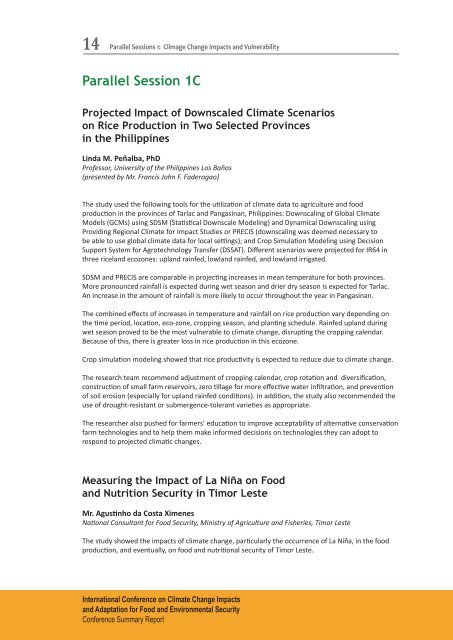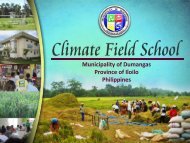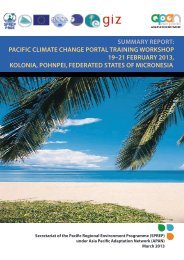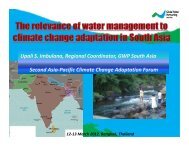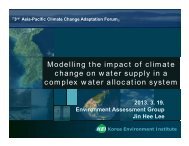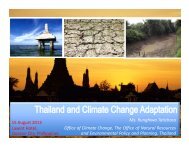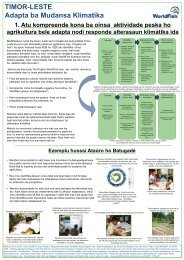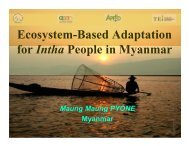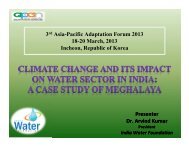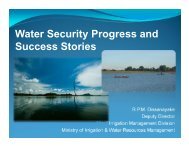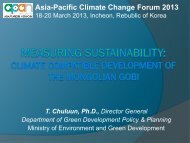PDF file (2.44 MB) - Asia Pacific Adaptation Network
PDF file (2.44 MB) - Asia Pacific Adaptation Network
PDF file (2.44 MB) - Asia Pacific Adaptation Network
Create successful ePaper yourself
Turn your PDF publications into a flip-book with our unique Google optimized e-Paper software.
14Parallel Sessions 1: Climage Change Impacts and VulnerabilityParallel Session 1CProjected Impact of Downscaled Climate Scenarioson Rice Production in Two Selected Provincesin the PhilippinesLinda M. Peñalba, PhDProfessor, University of the Philippines Los Baños(presented by Mr. Francis John F. Faderogao)The study used the following tools for the utilization of climate data to agriculture and foodproduction in the provinces of Tarlac and Pangasinan, Philippines: Downscaling of Global ClimateModels (GCMs) using SDSM (Statistical Downscale Modeling) and Dynamical Downscaling usingProviding Regional Climate for Impact Studies or PRECIS (downscaling was deemed necessary tobe able to use global climate data for local settings); and Crop Simulation Modeling using DecisionSupport System for Agrotechnology Transfer (DSSAT). Different scenarios were projected for IR64 inthree riceland ecozones: upland rainfed, lowland rainfed, and lowland irrigated.SDSM and PRECIS are comparable in projecting increases in mean temperature for both provinces.More pronounced rainfall is expected during wet season and drier dry season is expected for Tarlac.An increase in the amount of rainfall is more likely to occur throughout the year in Pangasinan.The combined effects of increases in temperature and rainfall on rice production vary depending onthe time period, location, eco-zone, cropping season, and planting schedule. Rainfed upland duringwet season proved to be the most vulnerable to climate change, disrupting the cropping calendar.Because of this, there is greater loss in rice production in this ecozone.Crop simulation modeling showed that rice productivity is expected to reduce due to climate change.The research team recommend adjustment of cropping calendar, crop rotation and diversification,construction of small farm reservoirs, zero tillage for more effective water infiltration, and preventionof soil erosion (especially for upland rainfed conditions). In addition, the study also recommended theuse of drought-resistant or submergence-tolerant varieties as appropriate.The researcher also pushed for farmers’ education to improve acceptability of alternative conservationfarm technologies and to help them make informed decisions on technologies they can adopt torespond to projected climatic changes.Measuring the Impact of La Niña on Foodand Nutrition Security in Timor LesteMr. Agustinho da Costa XimenesNational Consultant for Food Security, Ministry of Agriculture and Fisheries, Timor LesteThe study showed the impacts of climate change, particularly the occurrence of La Niña, in the foodproduction, and eventually, on food and nutritional security of Timor Leste.International Conference on Climate Change Impactsand <strong>Adaptation</strong> for Food and Environmental SecurityConference Summary Report


